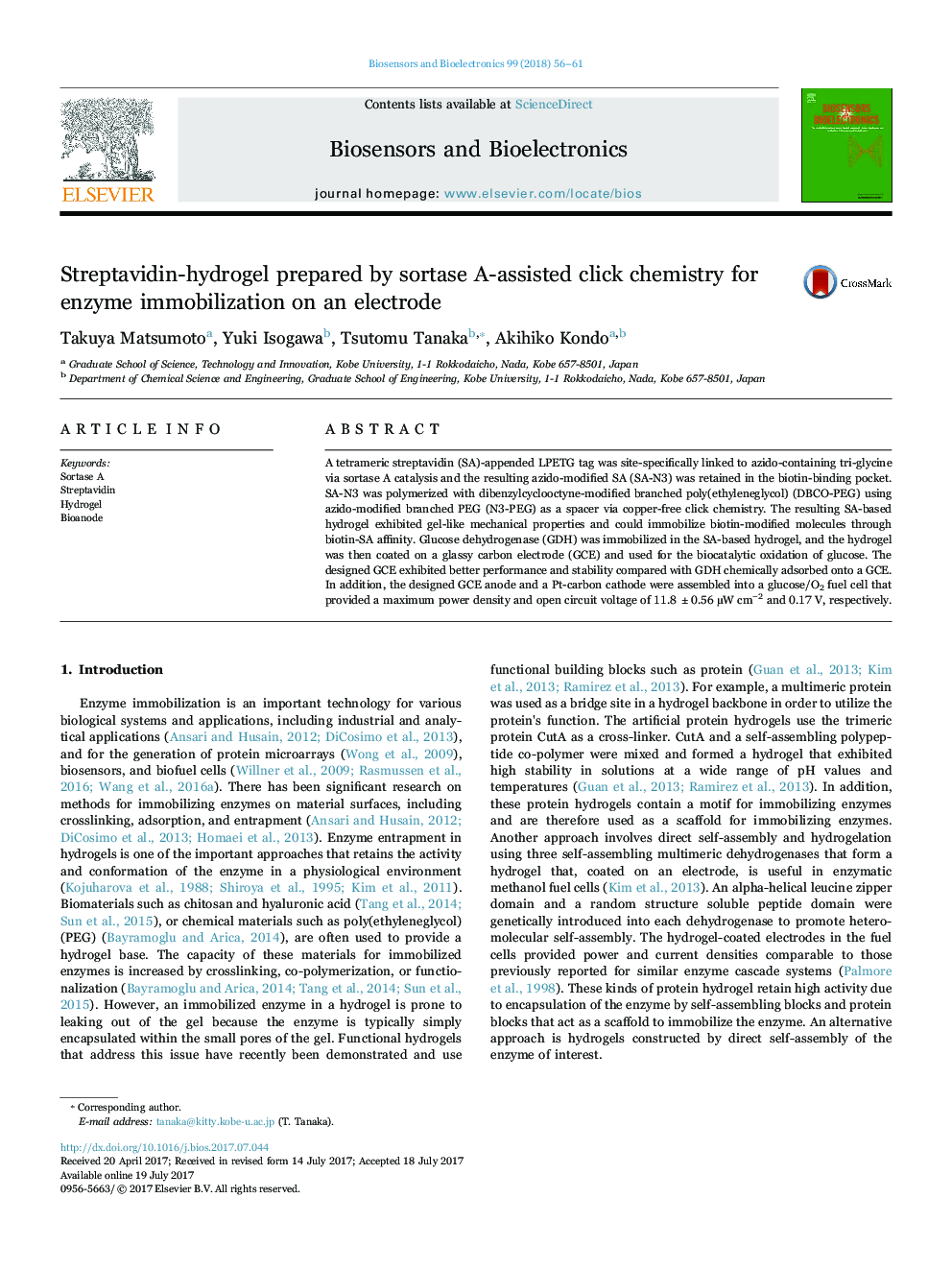| Article ID | Journal | Published Year | Pages | File Type |
|---|---|---|---|---|
| 5031312 | Biosensors and Bioelectronics | 2018 | 6 Pages |
â¢A hydrogel composed of streptavidin and branched PEG was newly prepared.â¢Streptavidin was used as a bridge site in the hydrogel backbone.â¢The hydrogel was used for immobilizing glucose dehydrogenase on an electrode.â¢The bioanode and Pt-carbon cathode were assembled into a glucose/O2 fuel cell.
A tetrameric streptavidin (SA)-appended LPETG tag was site-specifically linked to azido-containing tri-glycine via sortase A catalysis and the resulting azido-modified SA (SA-N3) was retained in the biotin-binding pocket. SA-N3 was polymerized with dibenzylcyclooctyne-modified branched poly(ethyleneglycol) (DBCO-PEG) using azido-modified branched PEG (N3-PEG) as a spacer via copper-free click chemistry. The resulting SA-based hydrogel exhibited gel-like mechanical properties and could immobilize biotin-modified molecules through biotin-SA affinity. Glucose dehydrogenase (GDH) was immobilized in the SA-based hydrogel, and the hydrogel was then coated on a glassy carbon electrode (GCE) and used for the biocatalytic oxidation of glucose. The designed GCE exhibited better performance and stability compared with GDH chemically adsorbed onto a GCE. In addition, the designed GCE anode and a Pt-carbon cathode were assembled into a glucose/O2 fuel cell that provided a maximum power density and open circuit voltage of 11.8 ±0.56 µW cm-2 and 0.17 V, respectively.
